
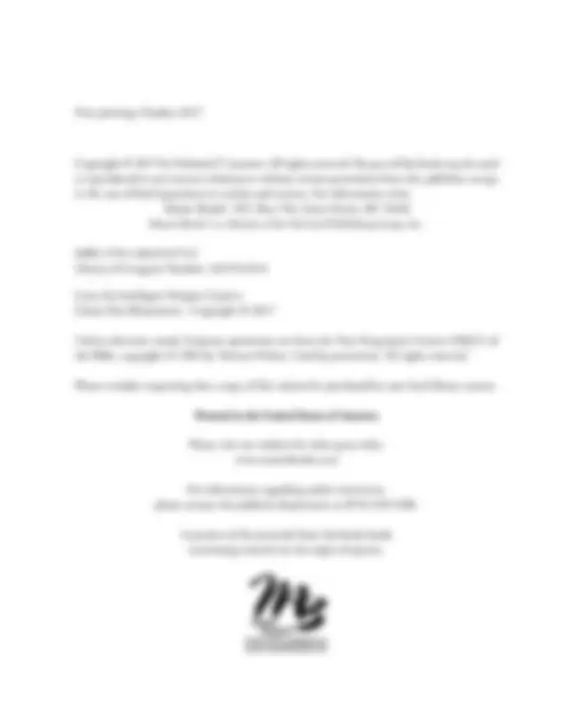


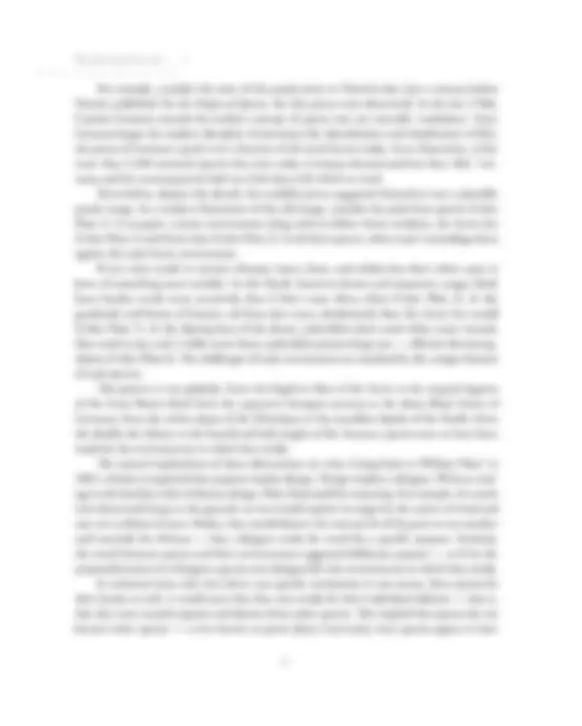
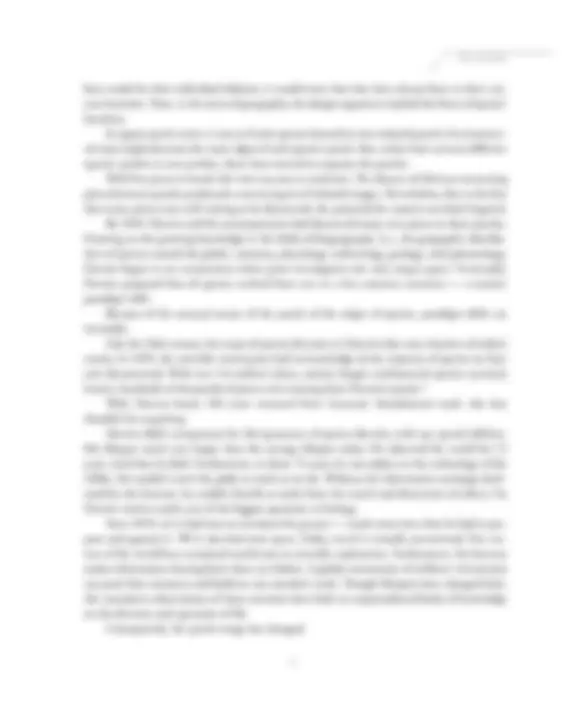
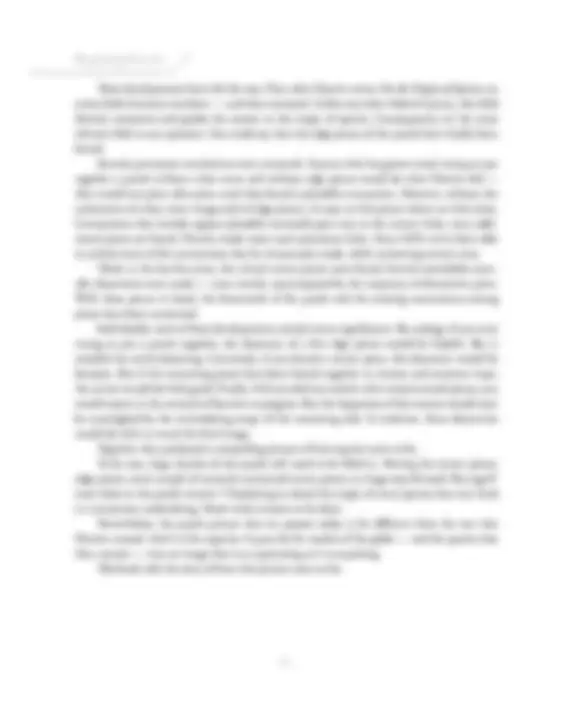
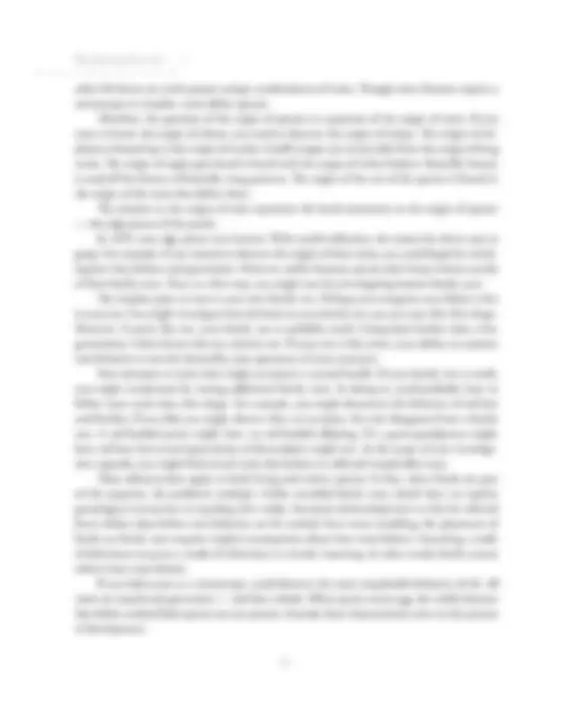
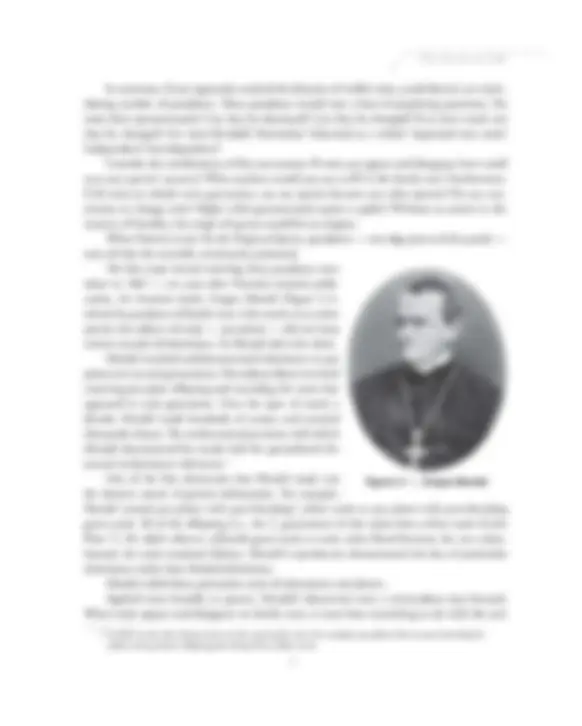
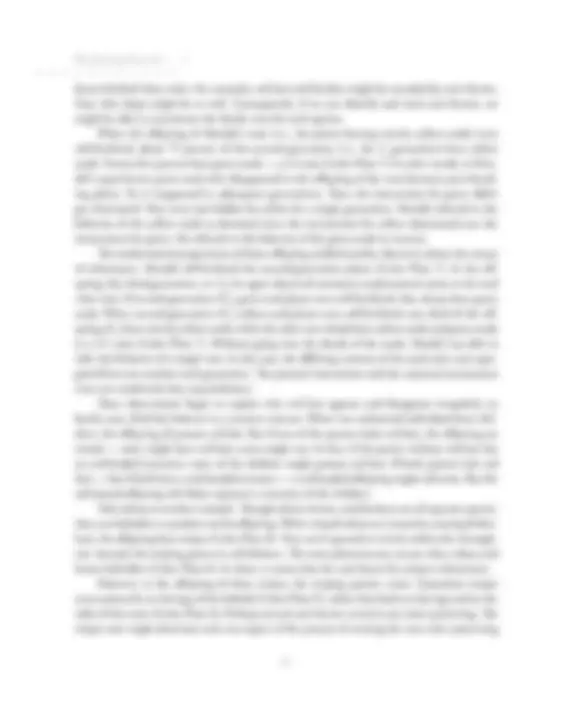
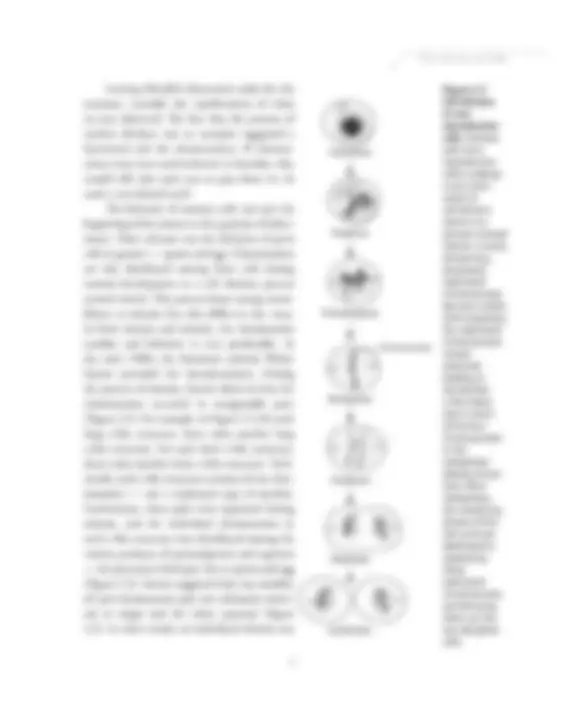
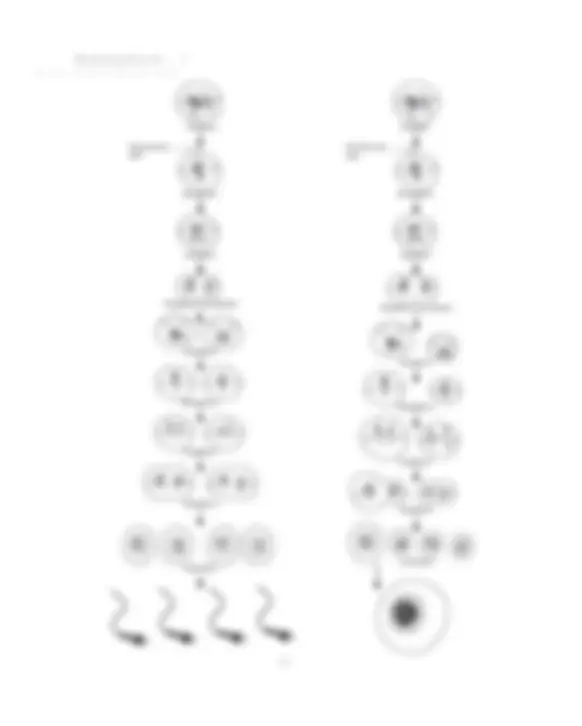
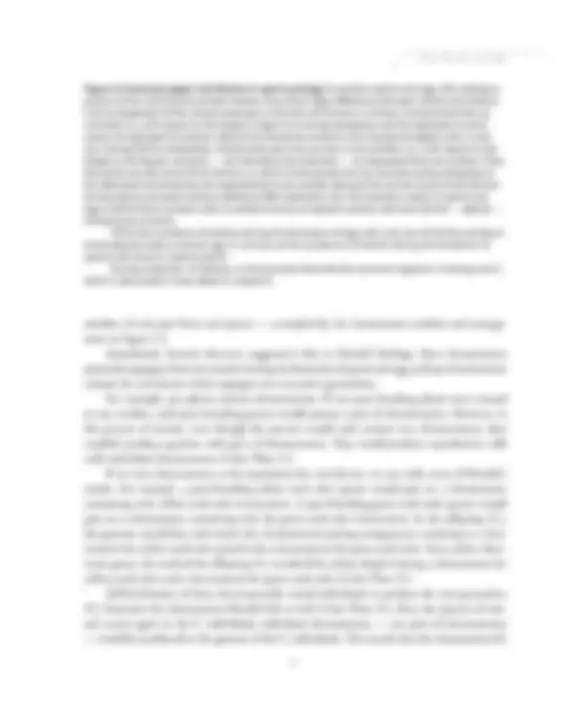
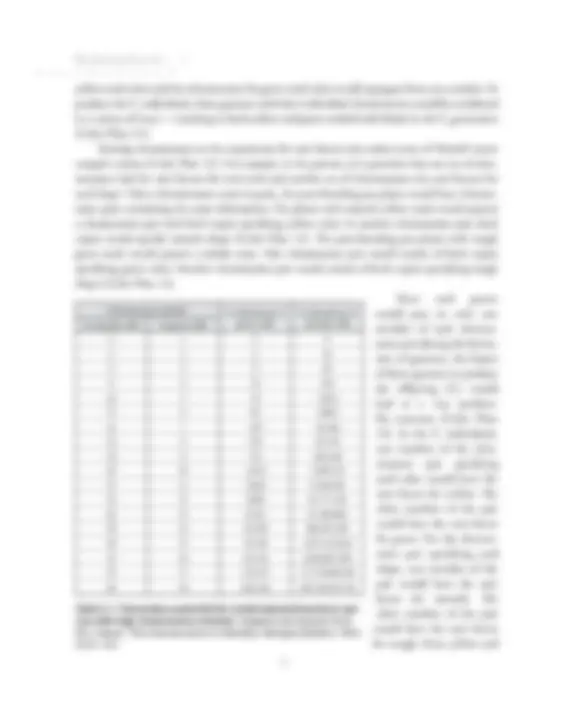
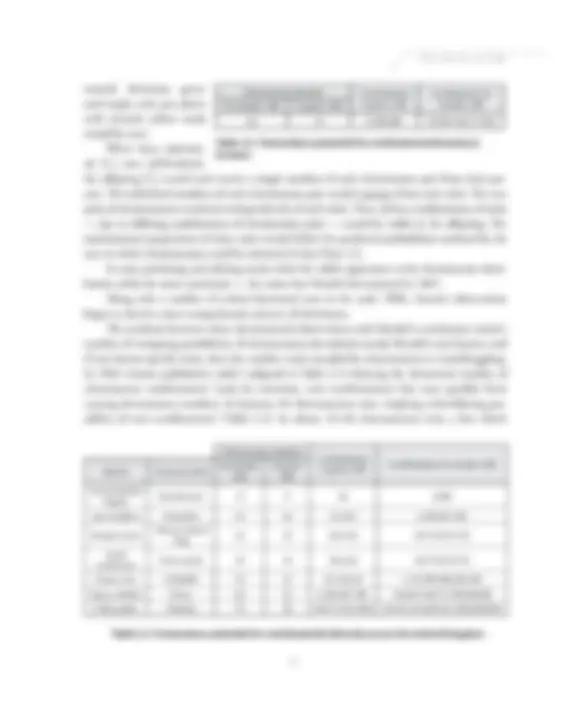
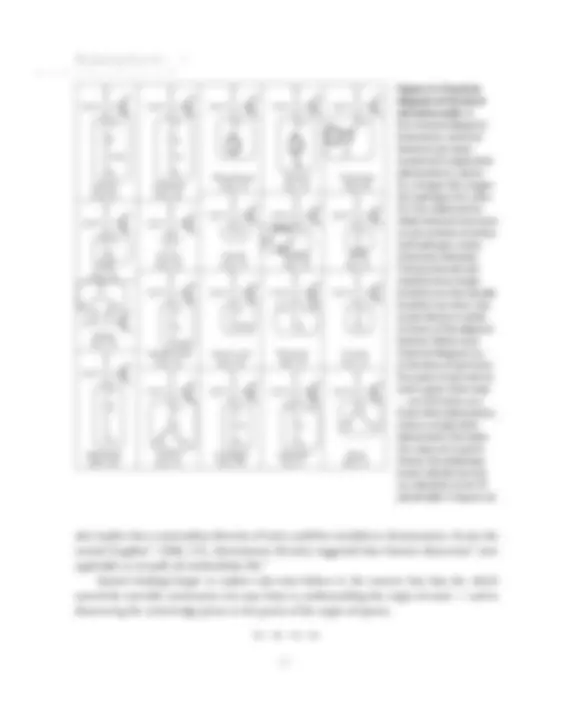
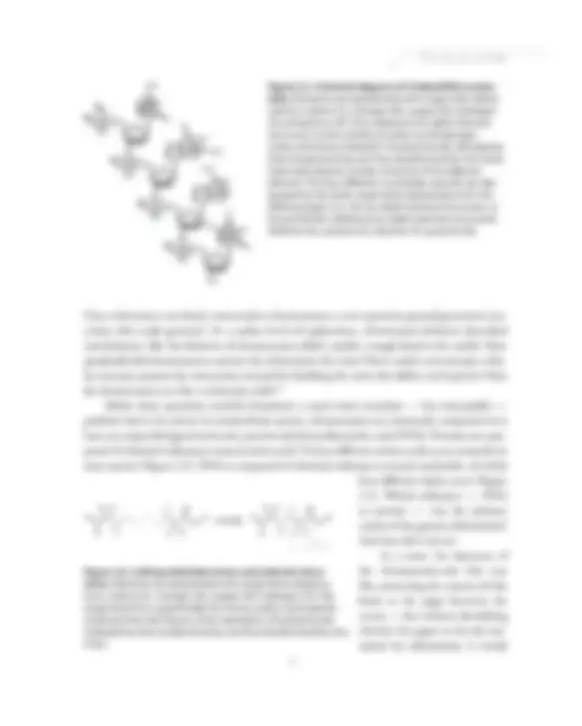
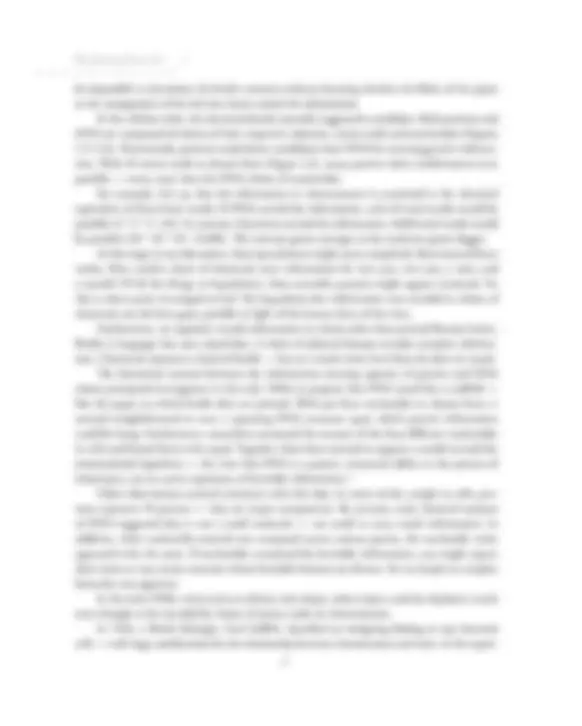
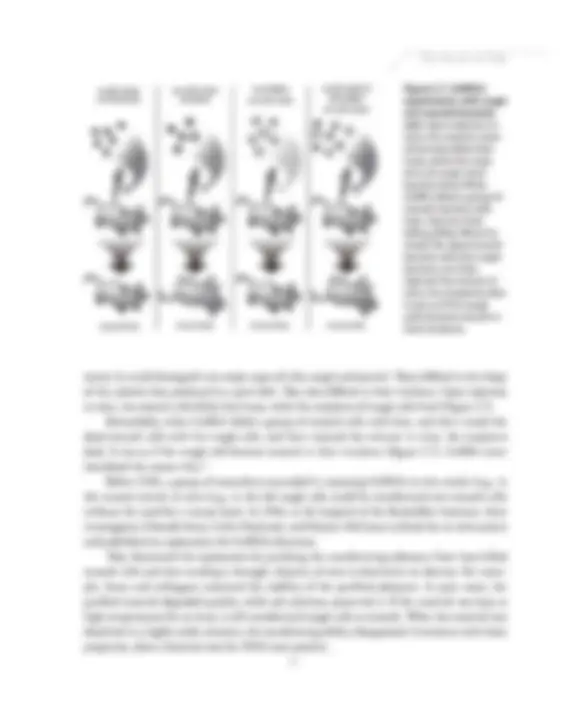
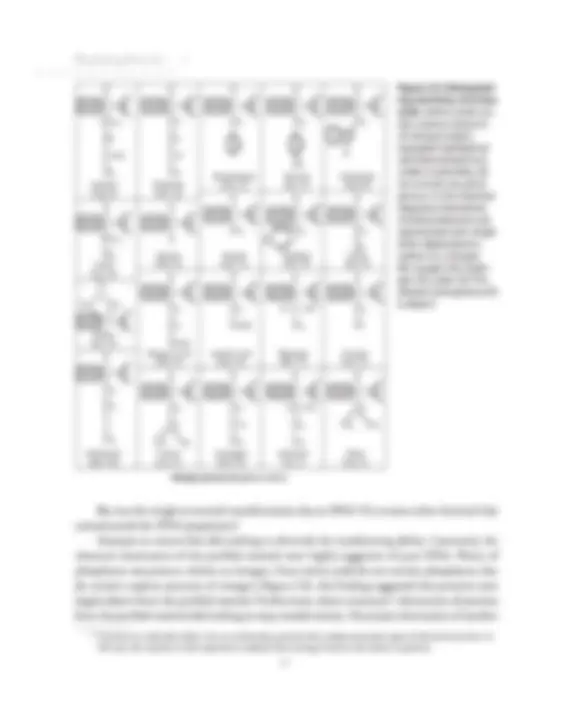
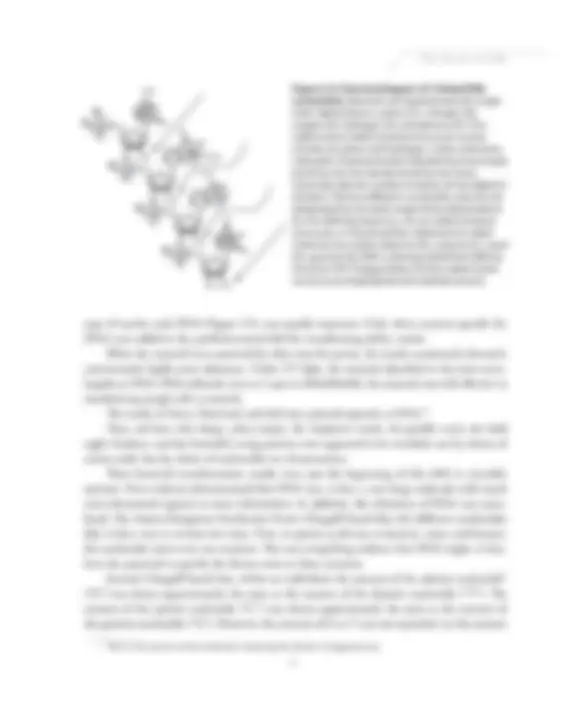
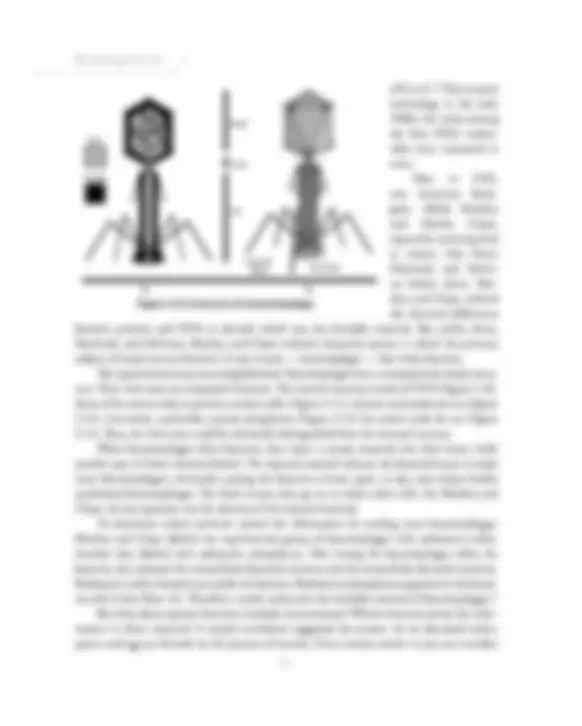
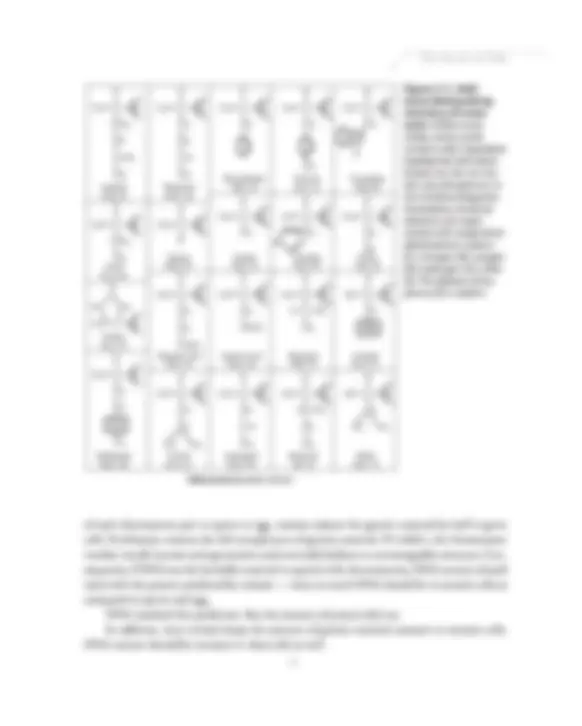
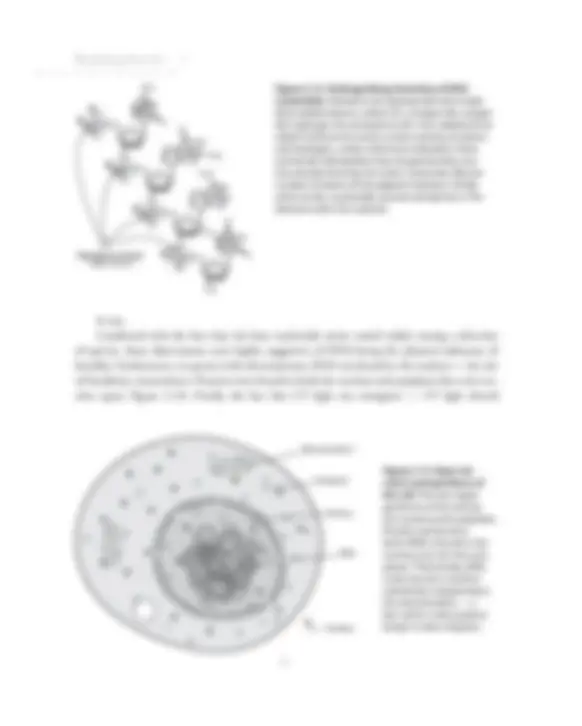
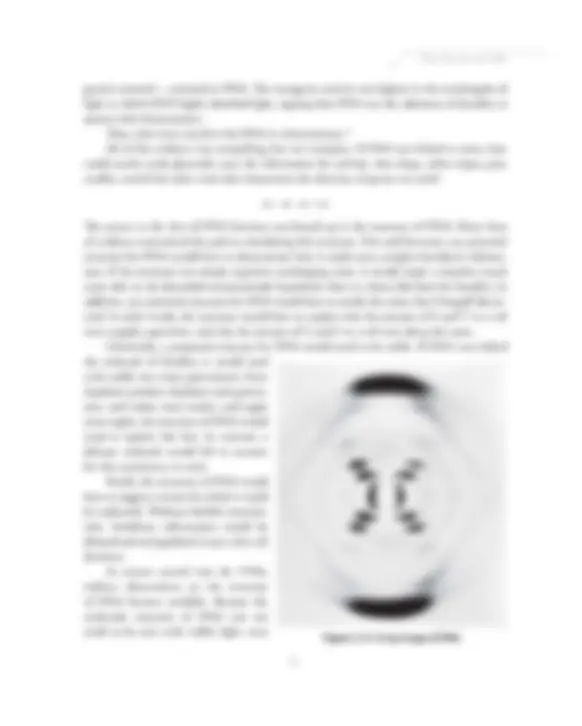
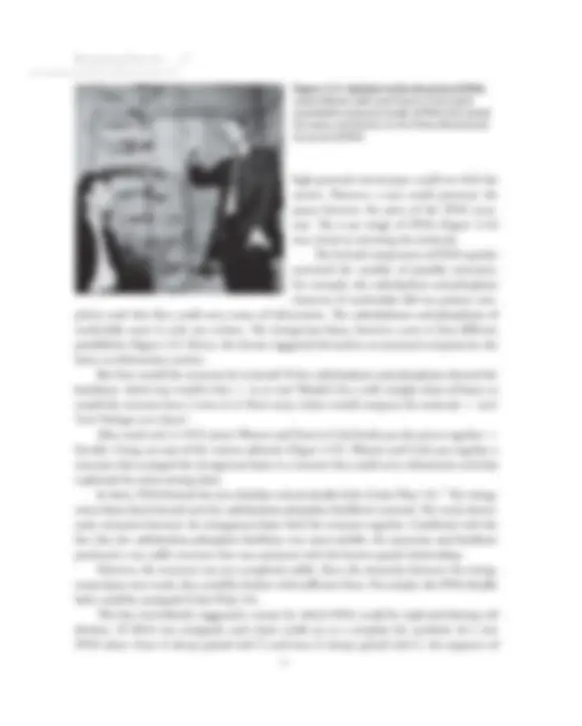
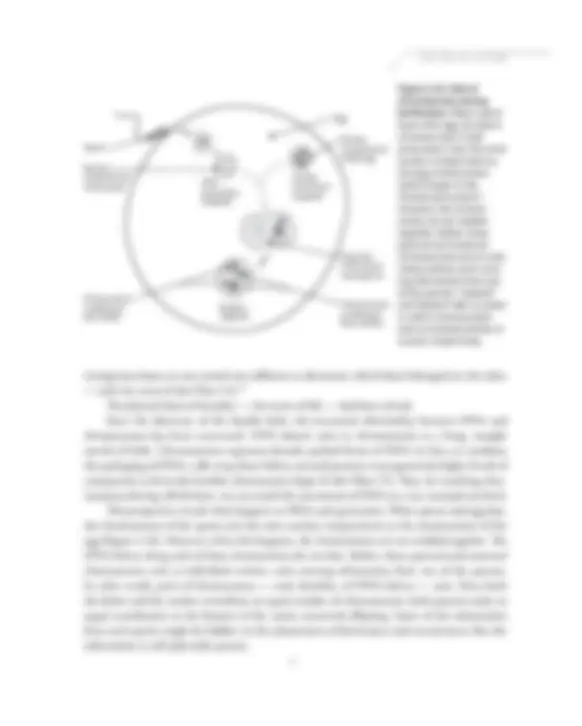
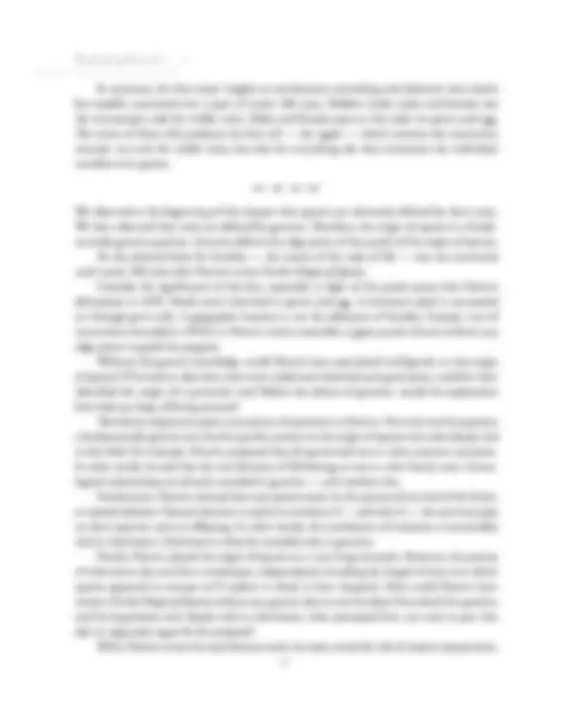


Study with the several resources on Docsity

Earn points by helping other students or get them with a premium plan


Prepare for your exams
Study with the several resources on Docsity

Earn points to download
Earn points by helping other students or get them with a premium plan
Community
Ask the community for help and clear up your study doubts
Discover the best universities in your country according to Docsity users
Free resources
Download our free guides on studying techniques, anxiety management strategies, and thesis advice from Docsity tutors
An insightful account of how the discovery of chromosomes and dna helped explain the behavior of traits in various species. Mendel's principles, chromosome distribution during meiosis, and the role of dna as the heritable material. The document also touches upon the findings of fred griffith and the subsequent discovery of dna as the genetic material.
What you will learn
Typology: Thesis
1 / 35

This page cannot be seen from the preview
Don't miss anything!




























The New Origin of Species
The New Origin of Species
To Patrick, Jason, and Jos é And many more like them
Introduction — Why Now?
Chapter 1 — Inevitable ............................................................................................ 9
Part I — A Field Is Born
Chapter 2 — The Secret of Life .............................................................................. 15 Chapter 3 — Cracking the Code............................................................................ 39
Color Plate Section ......................................................................................................... 65
Part II — All Things (re)Considered
Chapter 4 — The Riddle of Geography................................................................ 107 Chapter 5 — The Riddle of Ancestry ................................................................... 127 Chapter 6 — A Stitch in Time ............................................................................. 151
Part III — Dawn of a New Era
Chapter 7 — Turning the (time)Tables ................................................................ 167 Chapter 8 — A Preexisting Answer ...................................................................... 207 Chapter 9 — From DNA to Visible Traits............................................................ 233 Chapter 10 — On the Origin of New Species ...................................................... 247
Afterword ...................................................................................................................... 281
Endnotes ....................................................................................................................... 289
Acknowledgments ......................................................................................................... 323
Glossary ........................................................................................................................ 327
9
Inevitable
T
his book makes a bold claim — that the events of the last 130 years have rewritten the his- tory of life on this planet. On the surface, this statement might seem outrageous. A devel- opment this provocative would create at least as much upheaval as Darwin’s publication did. Yet, upon deeper reflection, both revolutions become less surprising. In fact, in the wider context of the history of biology, you could argue that both paradigm shifts were inevitable. To see how, an analogy is helpful. If we think of the origin of species* as a scientific jigsaw puzzle, each species is one piece of the bigger puzzle. Clues to their origins represent additional pieces. Paradigm shifts are major revisions in how the puzzle is put together. This latter concept requires some explanation. For jigsaw puzzles that come in a box, para- digm shifts are rare. The box cover guides the progress, and the total number of pieces constrains the possible arrangements. Even if a puzzle is large, these two factors streamline and smooth the assembly process. Unlike typical jigsaw puzzles, the puzzle of the origin of species does not come in a box. No cover exists. The final number of pieces are unknown. In fact, nearly all pieces must be actively sought. Consequently, with each new discovery, the potential for massive overhaul lurks in the background.
Replacing Darwin
10
For example, consider the state of the puzzle prior to Darwin’s day. Just a century before Darwin published On the Origin of Species , the first pieces were discovered. In the late 1700s, Carolus Linnaeus entered the modern concept of species into our scientific vocabulary. 1 Since Linnaeus began the modern discipline of taxonomy (the identification and classification of life), the pieces of Linnaeus’ puzzle were a fraction of the total known today. As an illustration, of the more than 5,400 mammal species that exist today, Linnaeus documented less than 200.^2 Lin- naeus and his contemporaries had very little data with which to work. Nevertheless, despite this dearth, the available pieces suggested themselves into a plausible puzzle image. As a modern illustration of this old image, consider the polar bear species (Color Plate 1). It occupies a snowy environment along with its fellow Arctic residents, the Arctic fox (Color Plate 2) and Arctic hare (Color Plate 3). In all three species, white coats 3 camouflage them against the stark Arctic environment. If you move south to warmer climates, bears, foxes, and rabbits lose their white coats in favor of something more suitable. 4 In the North American forests and mountain ranges, black bears lumber much more secretively than if their coats where white (Color Plate 4). In the grasslands and forests of Eurasia, red foxes dart more clandestinely than the Arctic fox would (Color Plate 5). In the blazing heat of the desert, jackrabbits don’t need white coats; instead, they need to stay cool. Unlike arctic hares, jackrabbits possess large ears — efficient thermoreg- ulators (Color Plate 6). The challenges of each environment are matched by the unique features of each species. This pattern is true globally. From the frigid ice floes of the Arctic to the tropical lagoons of the Great Barrier Reef; from the expansive Serengeti savanna to the dense Black Forest of Germany; from the airless slopes of the Himalayas to the soundless depths of the Pacific; from the deathly dry Sahara to the humid and lush jungles of the Amazon, species seem to have been made for the environments in which they reside. The natural implications of these observations are clear. Going back to William Paley 5 in 1802, scholars recognized that purpose implies design. Design implies a designer. With an anal- ogy to the familiar realm of human design, Paley illustrated his reasoning. For example, if a watch were discovered lying on the ground, no one would explain its origin by the action of wind and rain over millions of years. Rather, they would observe the intricate fit of the parts to one another and conclude the obvious — that a designer made the watch for a specific purpose. Similarly, the match between species and their environments suggested deliberate purpose — as if, by the purposeful action of a Designer, species were designed for the environments in which they reside. In technical terms, this view led to very specific conclusions in two arenas. Since species fit their locales so well, it would seem that they were made for their individual habitats — that is, that they were created separate and distinct from other species. This implied that species do not become other species — a view known as species’ fixity. Conversely, since species appear to have
Replacing Darwin
12
Three developments have led the way. First, after Darwin wrote On the Origin of Species , an entire field of science was born — and then matured. Unlike any other field of science, this field directly constrains and guides the answer to the origin of species. Consequently, it’s the most relevant field to our question. You could say that the edge pieces of the puzzle have finally been found. Second, premature conclusions were corrected. Anyone who has gotten stuck trying to put together a puzzle without a box cover and without edge pieces would do what Darwin did — they would test piece after piece until they found a plausible connection. However, without the constraints of a box cover image and of edge pieces, it’s easy to link pieces where no link exists. Connections that initially appear plausible eventually give way to the correct links, once addi- tional pieces are found. Darwin made many such premature links. Since 1859, we’ve been able to unlock some of the connections that he erroneously made, while cementing correct ones. Third, in the last few years, the critical corner pieces were found. Several remarkable scien- tific discoveries were made — ones entirely unanticipated by the trajectory of discoveries prior. With these pieces in hand, the framework of the puzzle and the existing connections among pieces have been reoriented. Individually, each of these developments carried minor significance. By analogy, if you were trying to put a puzzle together, the discovery of a few edge pieces would be helpful. But it wouldn’t be earth-shattering. Conversely, if you found a corner piece, this discovery would be fantastic. But if the remaining pieces have been forced together in clumsy and incorrect ways, the corner would do little good. Finally, if all you did was unlock a few misconnected pieces, you would rejoice in the removal of barriers to progress. But the happiness of this success would soon be outweighed by the intimidating scope of the remaining task. In isolation, these discoveries would do little to reveal the final image. Together, they produced a compelling picture of how species came to be. To be sure, large chunks of the puzzle still need to be filled in. Having the corner pieces, edge pieces, and a couple of correctly connected center pieces is a huge step forward. But signif- icant holes in the puzzle remain.^10 Explaining in detail the origin of every species that ever lived is a monstrous undertaking. Much work remains to be done. Nevertheless, the puzzle picture that we possess today is far different from the one that Darwin created. And it is far superior. It puts the far reaches of the globe — and the species that they contain — into an image that is as captivating as it is surprising. This book tells the story of how this picture came to be.
Part One
A Field Is Born
Replacing Darwin
16
other life forms on earth possess unique combinations of traits. Though some features require a microscope to visualize, traits define species. Therefore, the question of the origin of species is a question of the origin of traits. If you want to know the origin of zebras, you need to discover the origin of stripes. The origin of ele- phants is bound up in the origin of trunks. Giraffe origins are inextricable from the origin of long necks. The origin of eagles goes hand in hand with the origin of white feathers. Butterfly history is read off the history of butterfly wing patterns. The origin of the rest of the species is found in the origin of the traits that define them. The solution to the origin of traits represents the hard constraints on the origin of species — the edge pieces of the puzzle. In 1859, zero edge pieces were known. With careful reflection, the reason for this is easy to grasp. For example, if you wanted to discover the origin of these traits, you could begin by watch- ing how they behave each generation. However, unlike humans, species don’t keep written records of their family trees. Thus, as a first step, you might start by investigating human family trees. The simplest place to start is your own family tree. Perhaps you recognize your father’s chin in your jaw. You might investigate how far back on your family tree you can trace this chin shape. However, if you’re like me, your family tree is probably small. Going back further than a few generations, I don’t know who my relatives are. If your tree is like mine, your ability to examine trait behavior is severely limited by your ignorance of your ancestors. Your attempts to track traits might encounter a second hurdle. If your family tree is small, you might compensate by tracing additional family trees. In doing so, you’d probably have to follow more traits than chin shape. For example, you might document the behavior of red hair and freckles. If you did, you might observe that, on occasion, the trait disappears from a family tree. A red-headed parent might have no red-headed offspring. Or a great-grandparent might have red hair, but several generations of descendants might not. As the scope of your investiga- tion expands, you might find several traits that behave in odd and inexplicable ways. These idiosyncrasies apply to both living and extinct species. In fact, when fossils are part of the equation, the problems multiply. Unlike recorded family trees, fossils have no explicit genealogical connection to anything alive today. Ancestral relationships have to first be inferred from indirect data before trait behavior can be tracked. Even more troubling, the placement of fossils on family trees requires implicit assumptions about how traits behave. Assuming a mode of inheritance to prove a mode of inheritance is circular reasoning. In other words, fossils cannot inform how traits behave. If you had access to a microscope, you’d discover the most inexplicable behavior of all. All traits are erased each generation — and then rebuilt. When sperm meets egg, the visible features that define multicellular species are not present. Instead, these characteristics arise via the process of development.
The Secret of Life
17
In summary, if you rigorously tracked the behavior of visible traits, you’d discover an intim- idating number of paradoxes. These paradoxes would raise a host of perplexing questions. Do traits form spontaneously? Can they be destroyed? Can they be changed? If so, how much can they be changed? Are traits blended? Particulate? Inherited as a whole? Separated into units? Independent? Interdependent?^1 Consider the ramifications of this uncertainty. If traits can appear and disappear, how could you trace species’ ancestry? What markers would you use to fill in the family tree? Furthermore, if all traits are rebuilt every generation, can any species become any other species? Do any con- straints on change exist? Might a fish spontaneously spawn a spider? Without an answer to the mystery of heredity, the origin of species would be an enigma. When Darwin wrote On the Origin of Species , paradoxes — not edge pieces of the puzzle — were all that the scientific community possessed. The first steps toward resolving these paradoxes were taken in 1865 — six years after Darwin’s seminal publi- cation. An Austrian monk, Gregor Mendel (Figure 2.1), solved the paradoxes of family trees. Like nearly every other species, his subject of study — pea plants — did not keep written records of inheritance. So Mendel did it for them. Mendel watched and documented inheritance in pea plants over several generations. His tedious labors involved counting pea plant offspring and recording the traits that appeared in each generation. Over the span of nearly a decade, Mendel made hundreds of crosses and counted thousands of peas. The mathematical precision with which Mendel documented his results laid the groundwork for several revolutionary inferences.^2 One of the first discoveries that Mendel made was the discrete nature of genetic information. For example, Mendel crossed pea plants with pure-breeding* yellow seeds to pea plants with pure-breeding green seeds. All of the offspring (i.e., the F 1 generation) of this union bore yellow seeds (Color Plate 7). He didn’t observe yellowish-green seeds or some other blend between the two colors. Instead, the traits remained distinct. Mendel’s experiments demonstrated the fact of particulate inheritance rather than blended inheritance. Mendel called these particulate units of inheritance unit factors. Applied more broadly to species, Mendel’s discoveries were a tremendous step forward. When traits appear and disappear on family trees, it must have something to do with the unit
Figure 2.1 — Gregor Mendel
The Secret of Life
19
in the adult. Regardless, stripes in zebras behave largely according to the principles of inheritance that Mendel uncovered in plants. Together, the discovery of unit factors, of dominant and recessive traits, and of the segrega- tion of genetic information began to define clear rules for the ways in which traits behave each generation. Mendel performed even more complex crosses, which revealed yet another fundamental principle of inheritance. In addition to seed color, Mendel crossed plants bearing variety in other traits, such as seed form. For example, some of his plants bore seeds that were wrinkled while others bore seeds that were round (Color Plate 10). Just like with seed color, one form was dom- inant (e.g., round), and the other recessive (e.g., wrinkled). In one series of experiments, Mendel crossed plants that differed in seed color and seed form. The first cross involved pure-breeding yellow-colored, round form seed plants. These were crossed with pure-breeding green-colored, wrinkled form seed plants. As expected, all off- spring (F 1 generation) had yellow seeds that were round. When these second-generation plants (F 1 ) were self-fertilized, every possible combination appeared in their offspring (F 2 generation). Some F 2 plants had yellow and round seeds (about 9/16th of the offspring); some had yellow and wrinkled seeds (about 3/16th of the offspring); some had green and round seeds (about 3/16th of the offspring); and some had green and wrinkled seeds (about 1/16th of the off- spring) (Color Plate 10). In other words, the behavior of one trait was not tied to the behavior of another. If the seed color trait behaved one way, it had no effect on the behavior of the seed shape trait. Mathematically, the proportions of the offspring corresponded to what might be predicted from a model of two traits inherited independent of one another. Diagrammatically, all of these probabilities can be derived with a Punnett square (Color Plate 10). Since we’re dealing with two traits that each have dominant and recessive forms, the predicted frequencies are slightly skewed. Due to their recessive nature, recessive forms are predicted to appear less frequently than the dominant ones. But by assuming that traits are independent of one another, and that the differing versions of each trait segregate from one another (i.e., this is what the Punnett square diagram does in Color Plate 10), we can make mathematical sense of the results. In contrast, if the behavior of one trait was dependent upon the behavior of another, then the offspring would show ratios that did not agree with the probabilities derived from the Pun- nett square. Since the ratios agreed, Mendel inferred that the instructions for different traits sorted inde- pendently of one another. This discovery opened up a whole new world of possibilities. Think of all the traits that define your external features. Think of all the traits that define each species. Unit factors must exist for each of these traits. Some might be dominant, while others are recessive. Since the
Replacing Darwin
20
dominant and recessive versions of unit factors segregate from one another, traits can appear and disappear each generation. In a sense, these genetic discoveries define some of the limits to trait behavior. Conversely, since unit factors sort independently of one another, an overwhelm- ing number of potential combinations exist. Together, Mendel’s principles uncovered both the boundaries and the enormous opportunities for variety that exist within each species. In the years following Mendel’s work, other principles of inheritance have been discovered. In other words, exceptions to Mendel’s rules were found. For example, some unit factors are linked and do not sort independently of one another. As another example, other unit factors do indeed act in concert to produce a blended trait outcome. Nevertheless, Mendel’s findings laid a major foundation for our modern understanding of trait behavior. For reasons unknown, Darwin appears to have been unaware of Mendel’s work. Conversely, for equally unknown reasons, when Mendel died in 1884, his discoveries died with him, not to be resurrected until the turn of the century.
•• •• •• ••
Despite the strength and rigor of Mendel’s conclusions, his results never answered the question of why unit factors behave in the way that they do. In other words, Mendel’s rules successfully predicted how traits interact and combine. Yet these predictions didn’t reveal whether the rules could change — or whether they have changed in the past. If the rules could change, then traits might behave in entirely unexpected ways. Perhaps a fish could become a spider. Maybe it did in the distant past. Or maybe this change is impossible. Without the why of the rules of inheritance, these speculations would exist unfettered by reality. Without these fetters, the origin of traits would remain a mystery. Without an explanation for the origin of traits, the origin of species would remain an unsolved puzzle. Several decades after Mendel’s death, meticulous observation of cells during cell division put Mendel’s principles in more concrete, subcellular, and potentially mechanistic terms. Under the microscope, somatic cells (i.e., non-reproductive cells) were observed to divide through a process of cell division termed mitosis. In both animals and plants, before the nucleus breaks down, struc- tures that look like flexible noodles — chromosomes — appear in a period of time termed prophase (Figure 2.2). By prometaphase , the membrane surrounding the nucleus breaks down (Figure 2.2). During metaphase (Figure 2.2), the chromosomes line up in the center of the cell. These chromosomes appear as x-like structures because they represented two identical (replicated) chromosomes that are still partially joined. In anaphase (Figure 2.2), the replicated chromosomes are separated from one another and are pulled toward opposite ends of the cell. By telophase (Figure 2.2), the cell begins to split into two cells, each cell containing a chromosome content identical to the other cell, and the nuclear membrane begins to reappear. Cytokinesis completes the splitting process.
Chromosome pairs
Cytokinesis
Prophase II
Metaphase II
Anaphase II
Telophase II
Chromosome pairs
Prophase I
Metaphase I
Anaphase I
Telophase I & Cytokinesis
Prophase II
Metaphase II
Anaphase II
Telophase II
Cytokinesis
Telophase I & Cytokinesis
Prophase I
Metaphase I
Anaphase I
Replacing Darwin
22
The Secret of Life
23
member of each pair from each parent — as implied by the chromosome numbers and arrange- ment in Figure 2.3. Immediately, Sutton’s discovery suggested a link to Mendel’s findings. Since chromosomes physically segregate from one another during the formation of sperm and egg, perhaps chromosomes contain the unit factors which segregate over successive generations. For example, pea plants contain chromosomes. If two pure-breeding plants were crossed to one another, each pure-breeding parent would possess a pair of chromosomes. However, in the process of meiosis, even though the parents would each contain two chromosomes, they wouldn’t produce gametes with pairs of chromosomes. They would produce reproductive cells with individual chromosomes (Color Plate 11). If we treat chromosomes as the repositories for unit factors, we can make sense of Mendel's results. For example, a pure-breeding yellow seed color parent would pass on a chromosome containing only yellow seed color instructions. A pure-breeding green seed color parent would pass on a chromosome containing only the green seed color instructions. In the offspring (F 1 ), the gametes would fuse and restore the chromosomal pairing arrangement, resulting in a chro- mosome for yellow seed color paired with a chromosome for green seed color. Since yellow dom- inates green, the seeds of the offspring (F 1 ) would all be yellow, despite having a chromosome for yellow seed color and a chromosome for green seed color (Color Plate 11). Self-fertilization of these chromosomally mixed individuals to produce the next generation (F 2 ) illustrates the chromosome-Mendel link as well (Color Plate 11). Since the process of mei- osis occurs again in the F 1 individuals, individual chromosomes — not pairs of chromosomes — would be produced in the gametes of the F 1 individuals. This entails that the chromosome for
Figure 2.3 (previous page). Cell division in sperm and egg. To produce sperm and egg, cells undergo a process of two cell divisions termed meiosis. One of the major differences between mitosis and meiosis is the arrangement of the chromosome pairs in the first cell division. In mitosis, chromosomes line up vertically (i.e., with respect to the display in figure 2.2) during metaphase, and the replicated chromo- somes are separated to produce identical chromosome content in the resultant daughter cells. In mei- osis, during the first metaphase, chromosome pairs line up next to one another (i.e., with respect to the display in this figure), and pairs — not individual chromosomes — are separated from one another. Then, during the second round of cell division, in which chromosomes line up vertically during metaphase II, the replicated chromosomes are separated from one another. Because the second round of cell division during meiosis proceeds without additional DNA replication, the chromosome content in sperm and egg is half of that in somatic cells (a condition known as haploid; somatic cells have the full — diploid — chromosome content). Of the four products of meiosis during the formation of egg cells, only one of the four products eventually becomes a mature egg. In contrast, all four products of meiosis during the formation of sperm cells result in mature sperm. During prophase I of meiosis, a chromosomal diversification process happens (“crossing over”), which is discussed in more detail in chapter 9.